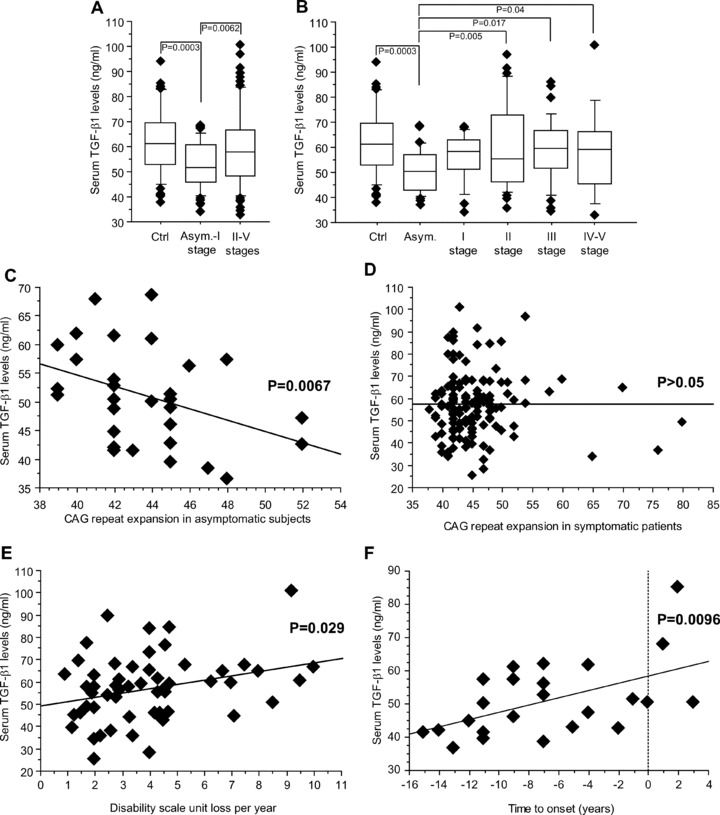Fig 1.

Serum TGF-β1 levels in HD patients. Reduced serum TGF-β1 levels in asymptomatic and stage-I HD patients (A). TGF-β1 levels in control (Ctrl) and all life stage patients are shown in (B). Statistical analysis was carried out by Student’s t-test in (A) and by one-way anova+ Fisher PLSD in (B). Linear dependence of serum TGF-β1 levels on expanded CAG repeat number in asymptomatic patients is shown in (C) (n= 30, R2= 0.16, P= 0.0067). The lack of correlation between serum TGF-β1 levels and the number of expanded CAG repeats in symptomatic patients is shown in (D). (E) Patients with disease length beyond 5 years and manifest HD (stages II-V) showed a slight but significant linear dependence of serum TGF-β1 levels on the rate of progression of the disease, calculated as loss of units of the DS per year (n= 54, R2= 0.10, P= 0.029). (F) Serum TGF-β1 in asymptomatic mutation carriers, whose predicted age at onset was estimated within further 15 years, showed an increase linearly correlating with the estimated time to onset (n= 24, R2= 0.27, P= 0.0096, simple regression analysis). The few patients with estimated time to onset higher than 0 on x-axis showed an age in years delayed to that expected on the basis of their CAG size.
